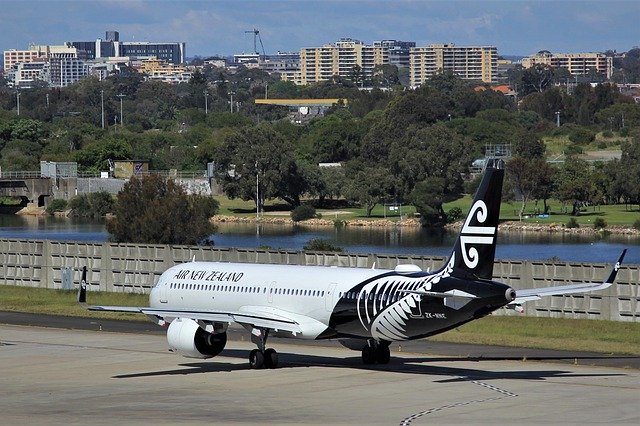This Content Is Only For Subscribers
Air New Zealand today announced earnings before taxation of $189 million for the 2025 financial year, compared with $222 million in the prior year. This result is at the upper end of the guidance range provided to the market in April. Net profit after taxation was $126 million.
The result reflects resilience despite ongoing global engine maintenance challenges, significant cost inflation and a soft domestic market.
Passenger revenue declined by two per cent to $5.9 billion, driven by a four per cent reduction in overall network capacity from engine availability constraints
Fuel costs improved 12 per cent, or $208 million, reflecting a decline in average jet fuel prices and lower volumes of fuel consumption in line with constrained capacity.
Non-fuel operating cost inflation of approximately $235 million, was driven primarily by higher landing charges, labour costs and engineering materials. This represents a year-on-year increase of around six percent, as system-wide aviation costs continue to rise faster than the New Zealand Consumer Price Index. This pricing pressure is expected to persist.
The airline maintained a disciplined focus on cost control. Targeted actions included renegotiating supplier contracts, reprioritising investment spend and further embedding procurement discipline across the business to deliver greater value.
The airline’s Kia Mau transformation initiatives delivered approximately $100 million in benefits, driven by stronger ancillary revenue from improved product offerings, ongoing premium demand and digital self-service initiatives such as live chat and automated passenger rebooking. Operational improvements also contributed, reducing disruption costs and lifting on-time performance by six percentage points in the second half. Together these benefits helped partially offset inflation while laying foundations for stronger long-term financial performance.
Chair Dame Therese Walsh says the result reflected the underlying strength of the business and the discipline with which it has been run.
“This is a solid result in a year where the airline faced real operational and economic pressure. It speaks to the capability of the team, the robustness of the business, and the financial discipline that Greg has instilled during his time as CEO. While near-term challenges remain, our balance sheet is strong, and our strategy is clear.
“Based on the result announced today, and reflecting that confidence, the Board has declared a final unimputed ordinary dividend of 1.25 cents per share, payable on September 25, 2025, to shareholders on record as at September 12, 2025. During the year, Air New Zealand was also pleased to return $38 million to shareholders through the share buyback programme announced in February,” says Dame Therese.
Dame Therese also took the opportunity to thank Greg Foran, who will step down later this year.
“Greg has led the business through an extraordinary period. He’s been clear, considered, and focussed, and leaves Air New Zealand in a position of real strength. On behalf of the Board, I want to thank him for his leadership.”
On the financial result, chief executive officer Greg Foran says Air New Zealand carefully managed engine-related disruptions throughout the year, with up to six narrowbody and five widebody aircraft out of service at times. While the airline received $129 million in compensation from engine manufacturers, it estimates earnings before taxation of $189 million could have been approximately $165 million higher had the fleet operated as intended.
Greg says the airline remained focussed on what it could control, making purposeful decisions to support customers and maintain schedule reliability.
“We acted early and decisively, securing additional engines and aircraft, and optimising our schedule to keep customers moving. While this came at a significant cost, it was the right decision to deliver for our customers and maintain network stability,” says Greg.
The airline continues to work closely with both Rolls-Royce and Pratt & Whitney on compensation arrangements, and to secure a more reliable picture of when engines will return to service.
“We are confident in the medium-term recovery path but note the next year will likely be every bit as constrained as the last. Unfortunately, there are no quick fixes, and navigating the next two years will require the same focus and discipline we’ve shown to date.”
Despite the challenges, we have delivered meaningful progress this year, with four fully retrofitted Boeing 787-9 Dreamliners returning to service, the unveiling of a new uniform, and the announcement of plans for a new international lounge at Auckland Airport.
Investments in infrastructure and digital capability were also made, with a new engineering hangar on track to open later in 2025, the Christchurch Engine Centre expansion progressing well, and around 3000 staff equipped with AI tools to improve service, speed, and efficiency.
“These achievements show the airline’s ability to execute against our plan, while seizing opportunities to deliver growth as scale returns,” says Greg.
2026 Outlook
While groundings related to engine availability constraints will continue into 2026, the airline notes signs of gradual improvement are beginning to emerge.
“While we’re not through it yet, we are seeing early signs that the most acute phase of disruption will be behind us within the year. The path to recovery won’t be linear, but we’re approaching it with focus and discipline,” says Greg.
In the year ahead, more than half of the airline’s existing Boeing 787 fleet is expected to be flying with fully modernised, premium-focussed interiors. Air New Zealand will also take delivery of its first two new Boeing 787s fitted with GE-powered engines, a major milestone in the long-term fleet renewal strategy. These aircraft, alongside an additional A321neo and ATR, will support increased capacity within New Zealand, across the Tasman and to North America, particularly during the peak summer period.
Greg says these are important steps, not just to restore capacity, but to position the airline for the future.
“We know what needs to happen to lift our financial performance. Good progress is already underway, and it will become increasingly evident as the network scales back up and our transformation work continues.
“While we aren’t yet seeing signs of recovery in the local economy, we remain confident that demand will return, and that we’re well placed to respond when it does.
“The year ahead will still have its challenges. System-wide aviation costs will be around $85 million higher, driven by increased air navigation fees, passenger levies and landing charges. Engine constraints will also remain a factor. But we’ve got the right strategy, a strong balance sheet, and a team that continues to deliver with heart, and that gives us real confidence in what lies ahead,” he says.
Guidance
The outcome and timing of compensation discussions with engine manufacturers remain uncertain, making it challenging for the airline to provide earnings guidance for the full year.
In the near term, that uncertainty, combined with sharp recent increases in aviation sector levies and other charges, all set against the backdrop of subdued domestic demand, is expected to adversely impact the airline’s financial performance in the first half.
As such, the airline expects earnings before taxation for the first half of the 2026 financial year to be similar to or less than that reported in the second half of the 2025 financial year ($34 million).
The airline is well-positioned for recovery when the engine challenges and economic conditions start to alleviate, but these issues continue to have a significant impact on current financial performance.



